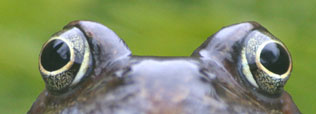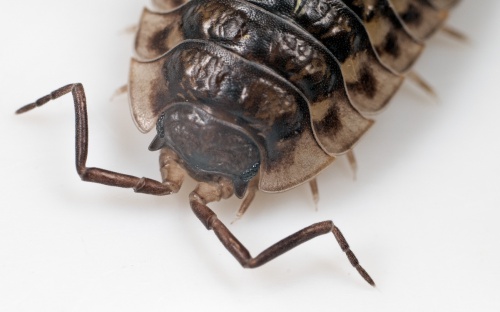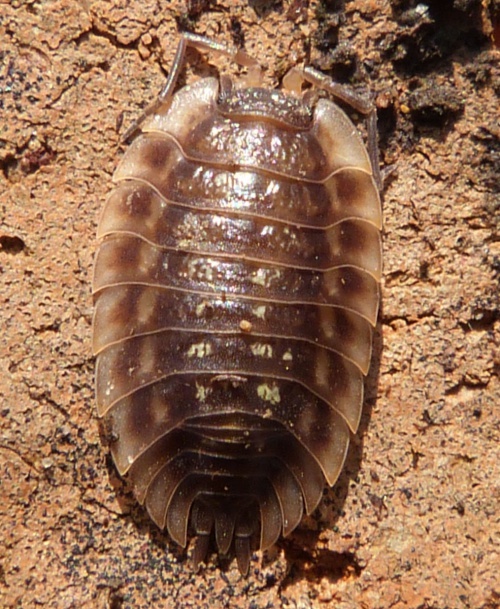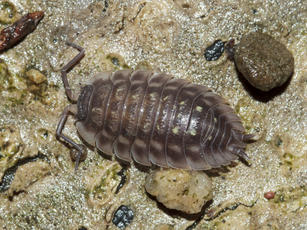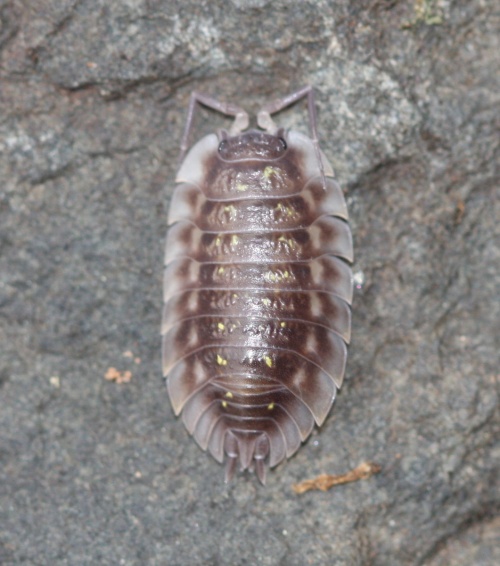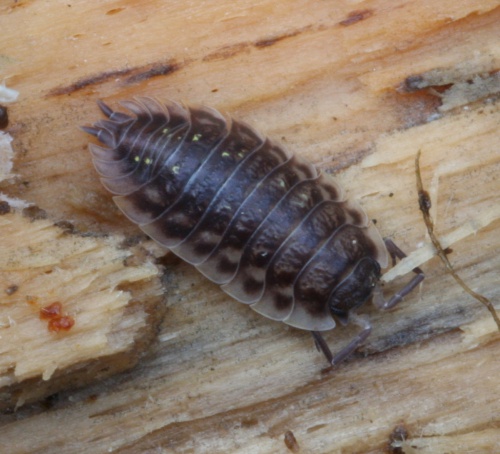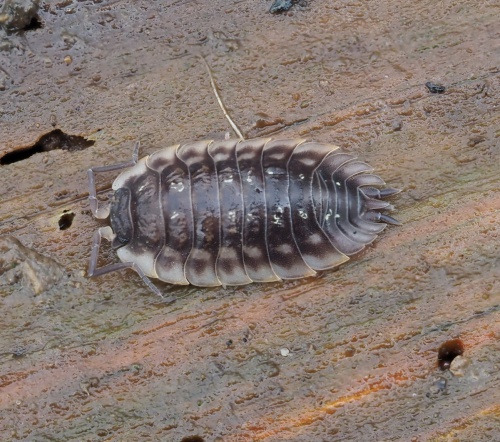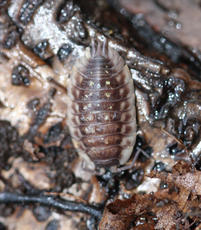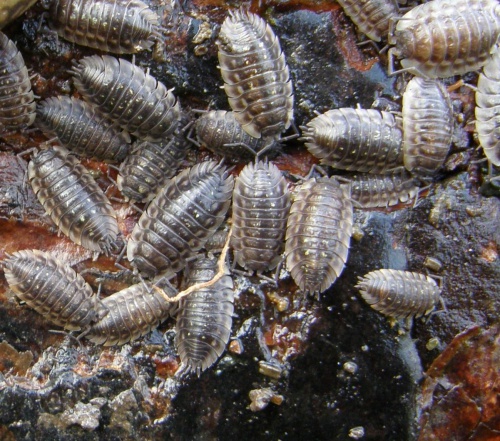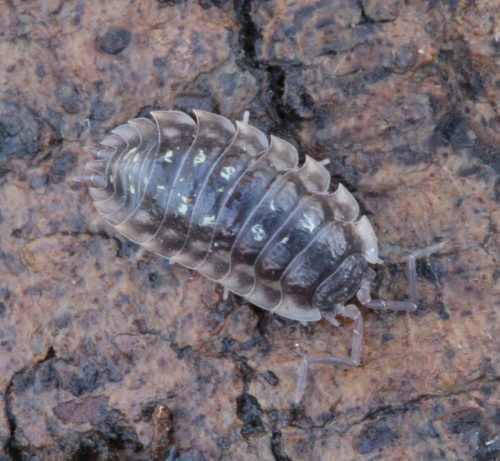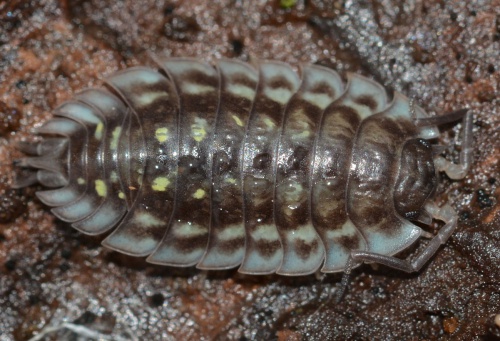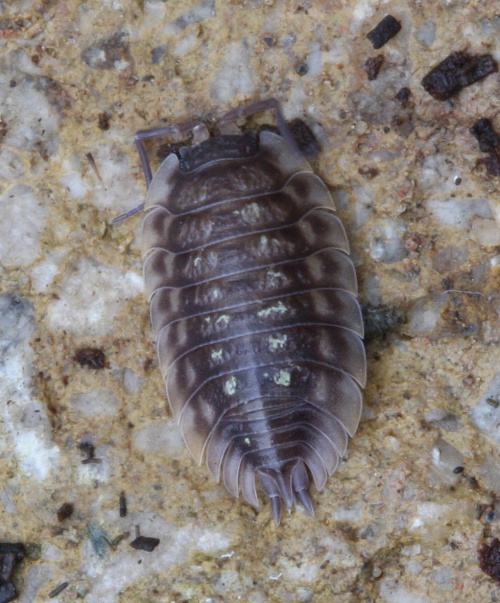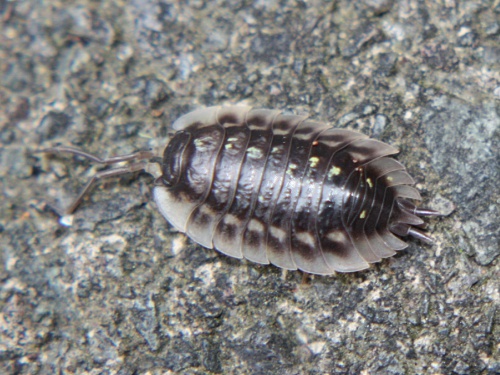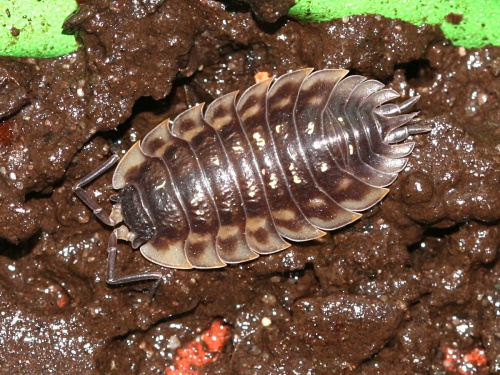Common Shiny Woodlouse - Oniscus asellus
Length: 16 mm. The common woodlouse is typically grey with irregular light patches. The surface of the body is dotted with raised blotches; adults usually have a glossy body, but in contrast juveniles often have a rough body texture. All Oniscus species have antennae with three flagellal segments at the tip.
Occurs in moist places in many habitats, and is frequently found under bark and amongst leaf litter in gardens and woodlands. This species avoids dry habitats, and unlike many woodlice, it can tolerate acid soils.
All year round.
Feeds on dead organic matter, which it detects by means of taste and smell. Mating tends to take place at night, and for this reason is very rarely observed. When a male finds a receptive female, he climbs onto her back and drums her with his front legs whilst 'licking' her head with his mouthparts.
Widespread and common throughout Britain.
Very common in Leicestershire and Rutland.
Leicestershire & Rutland Map
Enter a town or village to see local records
MAP KEY:
Yellow squares = NBN records (all known data)
Coloured circles = NatureSpot records: 2020+ | 2015-2019 | pre-2015
UK Map
Species profile
- Common names
- Common Shiny Woodlouse
- Species group:
- Woodlice, Crustaceans
- Kingdom:
- Animalia
- Order:
- Isopoda
- Family:
- Oniscidae
- Records on NatureSpot:
- 314
- First record:
- 30/09/1987 (Adrian Rundle)
- Last record:
- 26/04/2024 (Pugh, Dylan)
Total records by month
% of records within its species group
10km squares with records
The latest images and records displayed below include those awaiting verification checks so we cannot guarantee that every identification is correct. Once accepted, the record displays a green tick.
In the Latest Records section, click on the header to sort A-Z, and again to sort Z-A. Use the header boxes to filter the list.
